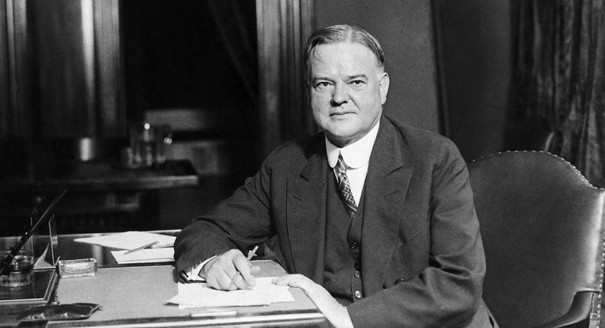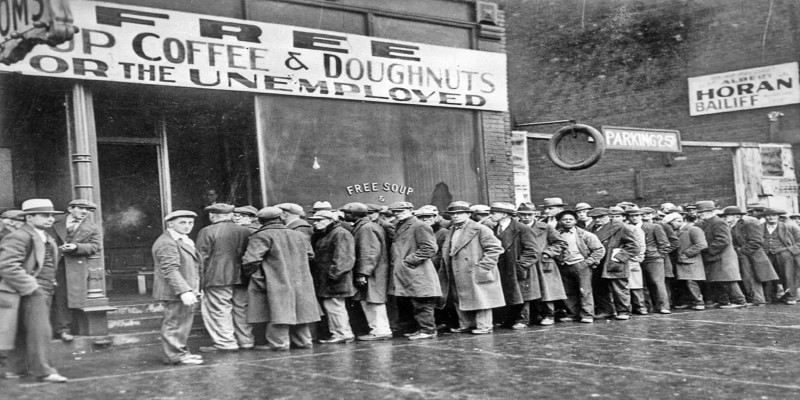Smoot-Hawley Tariff Act: History, Impact, and Lessons for Trade Policy
Advertisement
The Smoot-Hawley Tariff Act is most remembered as a critical turning point in U.S. economic history, witnessing unintended circumstances of protectionist policies. Passed in the heyday of the Great Depression, with the intention of once again protecting American industries through the rise in tariffs on imported goods, this legislation only led to increased international retaliations as it sank the global economic crisis.

But how did a policy ostensibly intended to protect domestic businesses contribute to such unprecedented ripples? Exploring the Smoot-Hawley Tariff Act's genesis, purpose, and ramifications provides insight into the very conception of economic policy and how global economic activity is affected by policy decisions.
The Origins of the Smoot-Hawley Tariff Act
The Smoot-Hawley Tariff Act, formally called the Tariff Act of 1930, was named after its sponsors, Senator Reed Smoot and Representative Willis C. Hawley. The United States faced the early manifestations of the Great Depression, high unemployment rates, and declining industrial production in the years that followed. The hope was that higher tariffs on imported goods would continue to protect moribund American farmers and manufacturers from foreign competition.
It is against this background of economic nationalism that the legislation emerged. The law proposed hiking tariffs on over 20,000 imported goods, an aim to cushion the domestic industries from cheaper foreign alternatives. This well resonated with the prevailing belief that insulation of the local market would stabilize the economy. Still, the act was not so smooth in passing. It was opposed by economists, business leaders, and even some lawmakers, who cautioned that there could be economic reprisals and injury to international trade relationships.
The Immediate Effects and Global Reaction

When President Herbert Hoover signed the Smoot-Hawley Tariff Act into law on June 17, 1930, it marked one of the highest tariff increases in U.S. history. Initially, the act provided a sense of relief to some American industries, particularly agriculture, which had been lobbying for tariff protection. However, the relief was short-lived.
The most immediate and devastating consequence of the Smoot-Hawley Tariff Act was the escalation of trade wars. Countries affected by the higher U.S. tariffs, such as Canada, France, and Britain, retaliated by imposing their tariffs on American exports. This tit-for-tat approach drastically reduced international trade, leading to a collapse in global commerce.
The act also had profound domestic consequences. American exporters, particularly in sectors like agriculture and manufacturing, found themselves shut out of foreign markets. This reduction in export opportunities exacerbated the already dire economic situation, contributing to higher unemployment and deeper economic contraction.
Long-Term Impact on the Global Economy

The Smoot-Hawley Tariff Act left a profound legacy that continues to shape discussions about trade policy to this day. By raising tariffs to historically high levels, it disrupted global trade at a time when economic cooperation was desperately needed. The act exacerbated the Great Depression by creating a feedback loop of protectionism. As countries retaliated against the United States, international trade volumes plummeted, cutting off a vital source of income for businesses and governments alike.
Beyond immediate economic impacts, the act also fueled political tensions in an already fragile global landscape. In Europe, nations struggling to recover from World War I faced mounting economic pressures due to dwindling trade opportunities with the U.S. This economic strain contributed to social unrest and political instability, conditions that helped pave the way for the rise of authoritarian regimes in countries like Germany and Italy.
In the decades that followed, policymakers sought to address the mistakes of the Smoot-Hawley era by fostering international cooperation. The General Agreement on Tariffs and Trade (GATT), established in 1947, was a direct response to the economic isolationism of the 1930s. GATT created a framework for negotiating tariff reductions and resolving trade disputes, laying the groundwork for today's World Trade Organization (WTO). The creation of such institutions underscored the understanding that a stable global economy requires open markets and collaborative trade relationships.
Lessons and Relevance in Modern Trade Policy
The Smoot-Hawley Tariff Act stands as a stark reminder of how short-sighted policies can lead to long-term economic damage. In today’s interconnected world, the lessons from this legislation are more relevant than ever. The act illustrates that while protectionist policies may seem beneficial in the short term, their broader consequences can harm both the domestic economy and global trade networks.
One key lesson is the importance of avoiding escalation. The trade wars triggered by Smoot-Hawley highlight how tit-for-tat measures can spiral out of control, damaging all parties involved. Recent examples, such as the U.S.-China trade tensions, serve as modern parallels. These disputes have led to higher tariffs on billions of dollars worth of goods, increasing costs for consumers and businesses while straining diplomatic relations. The echoes of Smoot-Hawley in such disputes underscore the need for diplomatic negotiation and multilateral solutions to trade conflicts.
The act also underscores the value of multilateral institutions like the WTO, which emerged to prevent the kind of economic fragmentation seen in the 1930s. These institutions promote cooperation and provide mechanisms to address disputes without resorting to trade wars. In an era where global supply chains are deeply interwoven, such frameworks are crucial for maintaining economic stability.
Another significant takeaway is the need for policymakers to consider the unintended consequences of their decisions. While Smoot-Hawley was intended to protect American farmers and manufacturers, it inadvertently harmed these very groups by cutting off their access to international markets. Modern policymakers must weigh both the immediate benefits and long-term repercussions of trade restrictions, taking into account the complexities of global economic interdependence.
Conclusion
The Smoot-Hawley Tariff Act remains a defining example of how economic policy can shape the course of history. Initially conceived as a tool to protect American industries, it ultimately contributed to a global economic crisis that deepened the Great Depression. The act’s legacy continues to influence discussions about trade policy, offering a cautionary tale about the dangers of protectionism in an interconnected world. By reflecting on the history and impact of the Smoot-Hawley Tariff Act, policymakers and citizens alike can gain a deeper understanding of the intricate relationship between trade, economics, and global cooperation.
Advertisement












